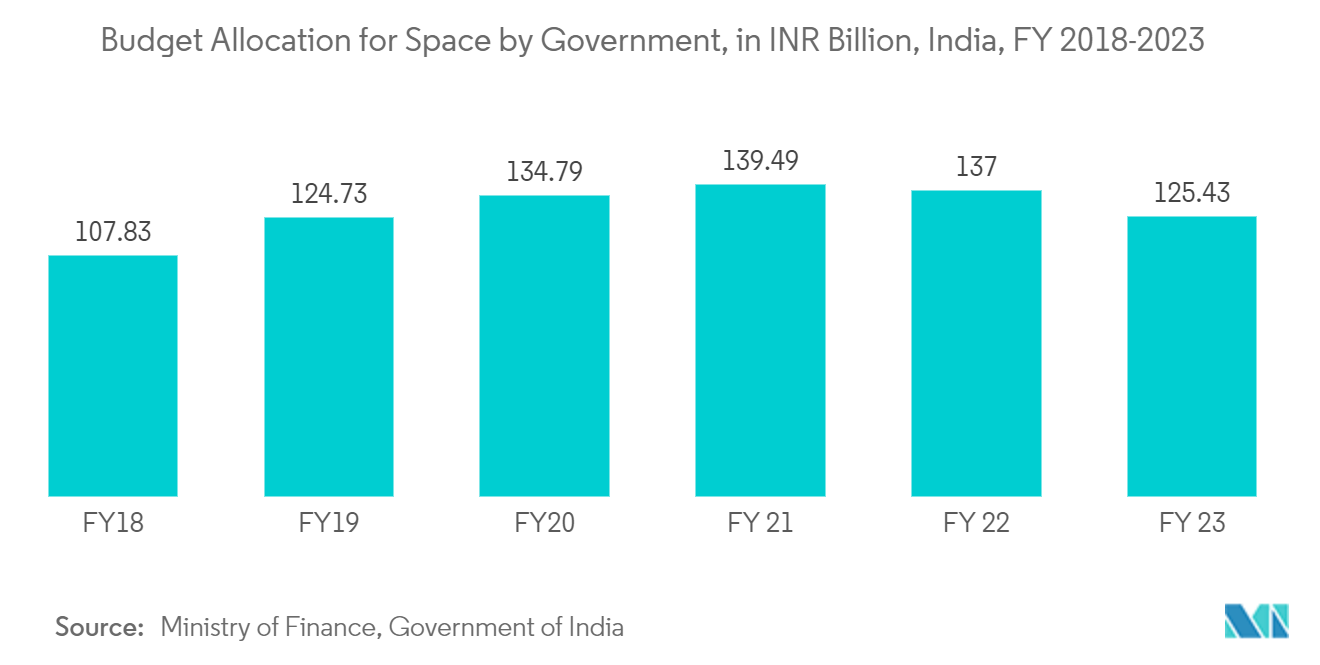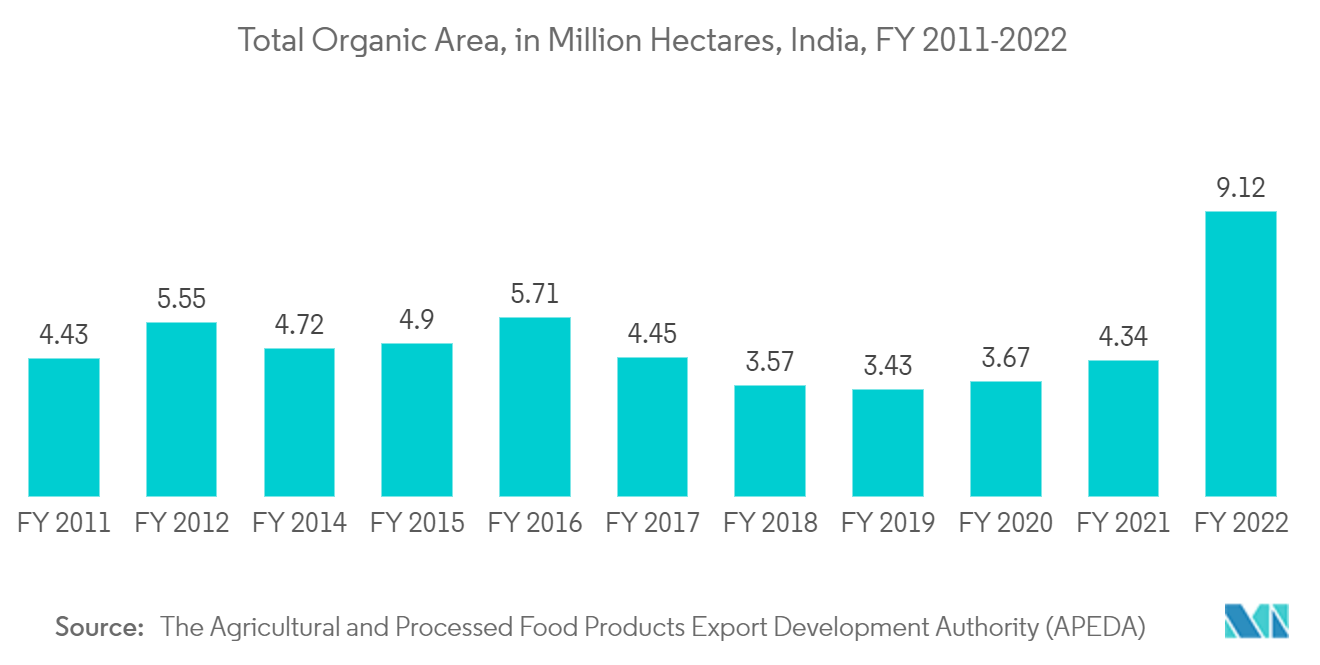Market Trends of India Satellite-based Earth Observation Industry
Government Initiatives and Investments to Drive the Market Growth
- The Indian government has taken significant initiatives and made investments to drive the growth of the satellite-based earth observation market in the country. These initiatives aim to enhance earth observation capabilities, promote research and development, and facilitate the utilization of satellite data across various sectors.
- The Indian Space Research Organisation (ISRO) is India's primary government agency responsible for space research and development. ISRO has been at the forefront of satellite-based earth observation, launching a series of remote sensing satellites equipped with advanced imaging and sensing capabilities. These satellites, such as the Resourcesat, Cartosat, and Oceansat series, have played a crucial role in gathering valuable data about the Earth's surface, atmosphere, and environment.
- Moreover, the National Remote Sensing Centre (NRSC) is a part of ISRO and serves as the nodal agency for satellite data acquisition and dissemination in India. NRSC is responsible for coordinating the utilization of satellite data and promoting its applications across various user sectors. It provides access to satellite imagery, value-added products, and services to government departments, research institutions, and other stakeholders.
- In addition, the Indian government has formulated the Indian Earth Observation Satellite (IEOS) policy to provide a framework for developing and utilizing earth observation satellites. The policy focuses on enhancing the capabilities of earth observation satellites, promoting data sharing and dissemination, facilitating international cooperation, and ensuring the utilization of satellite data for national development.
- Further, the Department of Space (DoS), which continues to be the core element of the nation's space program and carries out several significant initiatives, received INR 125.44 billion (USD 1.53 billion) from the Union Budget for 2023-2024 (FY 23). The 2023-24 Union Budget reduced the Department of Space's spending by 8%, bringing it from the previous Budget forecast of INR 137 billion (USD 1.67 billion) to INR 125.44 billion (USD 1.53 billion).
- However, this is 19% more than the updated forecast from the last fiscal year. This statistic indicates that there is still a significant allocation of funds to the Department of Space, although slightly reduced compared to the initial forecast. The fact that the budget allocation is higher than the previous fiscal year suggests that there is ongoing support for space-related initiatives and programs.

Agriculture End-use Segment to Hold a Significant Market Share
- The application of satellite-based earth observation technologies and data in the agriculture sector has gained tremendous importance due to its potential to improve farming practices, optimize resource management, and enhance overall agricultural productivity.
- Satellite-based earth observation provides valuable insights for monitoring and planning agricultural activities. It enables the assessment of crop health, vegetation indices, and land cover mapping, which helps farmers and agricultural authorities make informed decisions regarding irrigation, fertilizer application, and pest and disease management. Using satellite imagery, farmers can identify problem areas, optimize resource allocation, and take timely actions to mitigate risks and maximize yields.
- Accurate estimation and prediction of crop yields are crucial for planning agricultural production, managing supply chains, and ensuring food security. Satellite-based earth observation enables data collection on vegetation growth, biomass, and spatial variability, which can be used to estimate crop yields over large areas. This information helps farmers, traders, and policymakers make informed decisions about resource allocation, market pricing, and distribution strategies.
- In addition, the Indian government has been actively promoting satellite-based earth observation in agriculture. Initiatives such as the National Agricultural Drought Assessment and Monitoring System (NADAMS) and the Soil Health Card Scheme (SHCS) leverage satellite data to provide farmers with valuable information on soil health, crop suitability, and drought conditions. Government support, subsidies, and awareness campaigns further drive the adoption of satellite-based earth observation in agriculture.
- Further, according to the Agricultural and Processed Food Products Export Development Authority (APEDA), India's total organic area increased from roughly five million hectares in fiscal year 2012 to nearly 9.12 million hectares in fiscal year 2022. The agriculture sector can benefit from valuable insights and data to support organic farming practices by leveraging satellite-based earth observation. The information obtained through satellite imagery can contribute to sustainable agriculture planning, improve productivity in organic farming areas, and enable informed decision-making for farmers, policymakers, and other stakeholders in the agriculture industry.

